Are you worried about the security of your home or office? Do you want to take steps to improve your current security system?
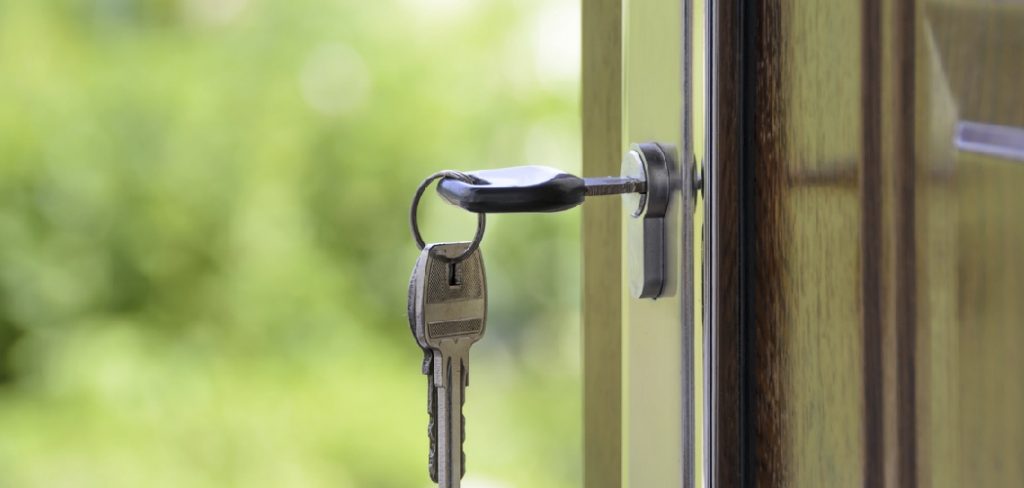
In an era where technology evolves at an unprecedented pace, ensuring the utmost security of our homes and workplaces has become paramount. Improving a security system is not just about enhancing physical safety measures, but also about leveraging technological advancements to safeguard against digital threats. This guide on how to improve security system aims to offer insights into both aspects, providing a comprehensive approach to enhancing the security infrastructure.
The following sections outline key strategies for fortifying your protection against a wide range of vulnerabilities, from upgrading hardware to integrating smarter, AI-driven solutions. Whether you’re a homeowner looking to keep your family safe or a business owner aiming to protect your assets, these tips will help you stay several steps ahead of potential threats.
What are the Benefits of Improving Your Security System?
Upgrading your security system has numerous benefits, both tangible and intangible. Firstly, it provides a sense of peace of mind, knowing that you have taken all necessary precautions to protect yourself and your loved ones. In case of unfortunate incidents, a robust security system can also provide valuable evidence for law enforcement and insurance purposes.
Moreover, a well-protected establishment also deters potential threats, as burglars and other criminals are less likely to target a building with advanced security measures in place. This can significantly reduce the risk of thefts and break-ins, saving you from costly damages and losses.
Additionally, investing in security system improvements can also lead to long-term cost savings. By preventing unauthorized access and potential damages, you can avoid costly repairs and replacements in the future. This saves money and ensures the smooth operation of your home or business.
What Will You Need?
Before you start improving your security system, assessing your current situation and identifying any existing vulnerabilities is essential. Depending on the type of property and specific needs, some common components of a security system include:
- CCTV cameras
- Motion sensors
- Door and window alarms
- Access control systems (e.g., keypads, biometric scanners)
- Smart locks
Once you have identified your requirements, it’s time to research and purchase the necessary equipment. Make sure to choose high-quality products from reputable brands to ensure reliability and durability.
10 Easy Steps on How to Improve Security System
Step 1. Upgrading Hardware:

One of the most effective ways to improve security is by upgrading hardware components. For instance, if you have outdated locks on your doors or windows, consider replacing them with stronger, more modern options.
Similarly, upgrading old CCTV cameras to newer models with better resolution and advanced features can significantly enhance your surveillance capabilities.
Step 2. Installing Motion Sensors:
Motion sensors are a crucial addition to any comprehensive security system, serving as the eyes of your property when you’re not around. These devices detect any form of movement within a specified area.
They can trigger various responses, such as turning on lights, activating alarm systems, or sending immediate alerts to your phone or security service provider. Installing motion sensors around key entry points and vulnerable areas of your home or office can significantly deter unauthorized access.
They are particularly effective in less frequented areas, such as backyards, basements, or side entrances. By incorporating motion sensors, you enhance the responsiveness of your security system, making it more adept at recognizing and reacting to potential threats in real time.
Step 3. Implement Smart Locks:
Incorporating smart locks into your security system offers a modern and highly secure method of controlling access to your property. Unlike traditional locks, smart locks provide the flexibility to lock and unlock doors remotely using a smartphone app, key fobs, or even biometrics like fingerprints or facial recognition.
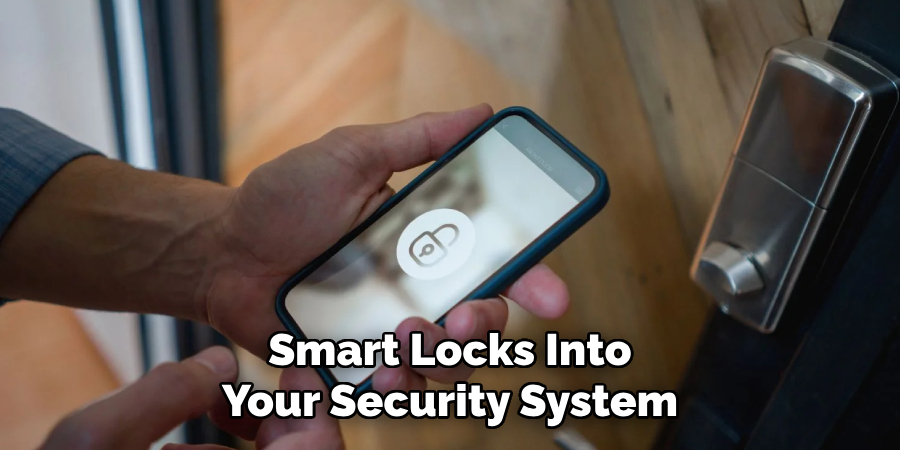
This technology enhances security and adds convenience, as you can grant or revoke access to visitors without needing to physically exchange keys. Additionally, most smart locks come with activity logs, allowing you to monitor who enters and exits your property and at what times, further increasing your peace of mind.
Step 4. Integrate Security Cameras with Motion Detection:
Integrating security cameras equipped with motion detection technology is a pivotal step in upgrading your security system. These advanced cameras can alert you to unexpected movements in real time, enabling you to monitor your property closely, even when you’re miles away.
The integration of motion detection helps conserve storage space and reduces power consumption, as cameras only record when triggered by movement.
This enhances the efficiency of your surveillance system and ensures that you capture only the most relevant footage, making it easier to review when needed. By choosing cameras that offer night vision and weatherproof features, you can further strengthen your security measures, ensuring round-the-clock monitoring under various conditions.
Step 5. Utilize Smart Home Integration:
Smart home technology integration takes your security system to the next level by allowing various components to communicate and work together seamlessly. For instance, connecting your security cameras, motion sensors, and smart locks with other smart devices such as lighting systems or smart thermostats, can enhance your property’s overall security and efficiency.
In the event of an intrusion, your system can be programmed to turn on all lights, adjust the thermostat to an uncomfortable setting for the intruder, or even play loud sounds to deter the trespasser.
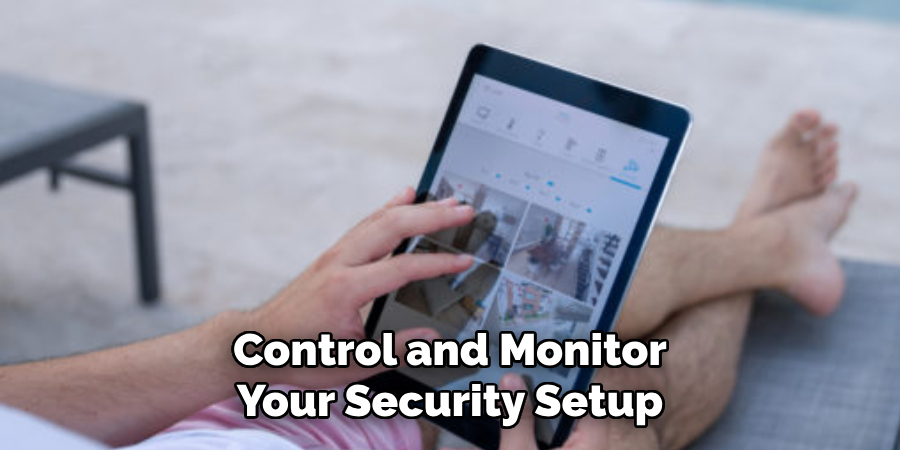
Furthermore, this integration lets you control and monitor your security setup through a single, user-friendly platform, providing convenience and reassurance that your property is secure.
Step 6. Regular System Updates and Maintenance:
Keeping your security system up-to-date is crucial for maintaining its effectiveness. Regular updates ensure that all your security devices are operating with the latest firmware, protecting against potential vulnerabilities that hackers could exploit. Additionally, routine maintenance checks can help identify and remedy any physical damages or technical glitches that might compromise your system’s performance.
This should include checking camera lenses for clarity, testing motion sensors and alarms for responsiveness, and ensuring that locks and access controls are functioning correctly. By staying vigilant with updates and maintenance, you can ensure your security system remains robust and reliable, safeguarding your property against evolving threats.
Step 7. Enhance Network Security:
In today’s digital age, ensuring the security of your network is as crucial as putting physical security measures in place. Many modern security systems rely on internet connectivity to operate effectively, making them vulnerable to cyber-attacks.
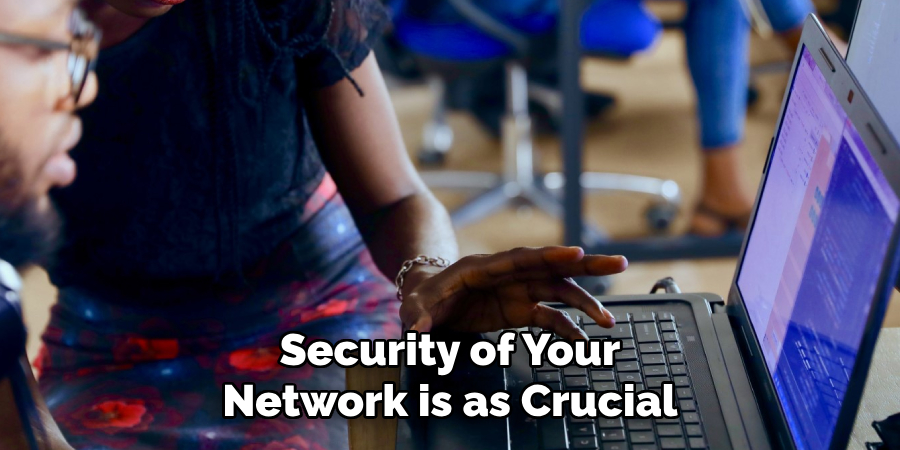
To mitigate this risk, securing your network by enabling strong encryption methods, setting up firewalls, and changing default passwords to complex, unique alternatives is essential. Regularly updating your security software and conducting vulnerability scans can also help identify and address potential security flaws in your system.
Taking these steps will protect your security devices from unauthorized access and ensure the integrity of your surveillance footage and data.
Step 8. Foster a Culture of Security Awareness:
Creating a culture of security awareness among household members or employees is a vital step in reinforcing your overall security strategy.
Regularly educate and remind individuals about the importance of security protocols, such as securing access codes, not sharing passwords, and recognizing potential security threats. Encourage the reporting of suspicious activities and ensure that everyone understands how to operate security devices and respond in case of an emergency.
By fostering a proactive security culture, you help create a collaborative environment where everyone plays a part in maintaining the safety and integrity of the property. This collective vigilance can significantly enhance the effectiveness of your security measures, making your home or workplace a safer place for everyone.
Step 9. Evaluate Security System Performance Regularly:
Ensuring that your security system remains effective over time requires regular performance evaluations. This involves conducting periodic reviews to assess how well your security measures are functioning and identify any areas needing improvement or upgrading.
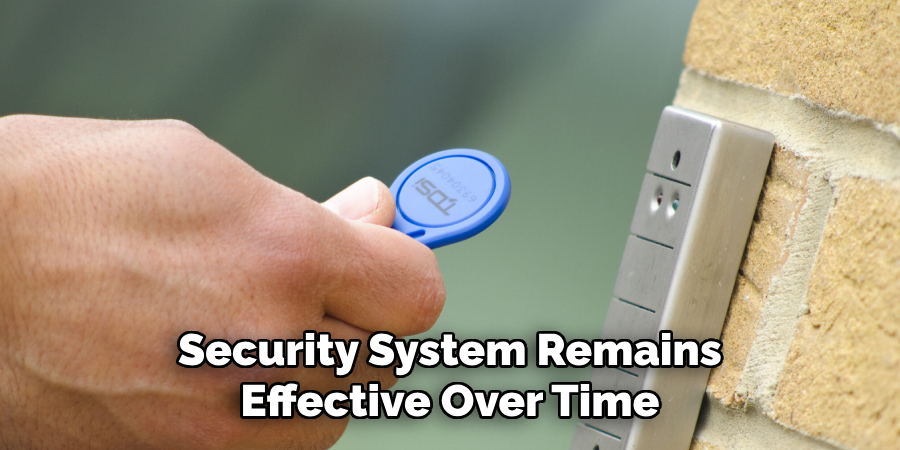
Testing the responsiveness of sensors and alarms, reviewing the quality and relevance of recorded footage, and ensuring that all remote access features operate smoothly are essential checks.
Additionally, staying informed about new security technologies and threats can provide opportunities to enhance your system further. By adopting a proactive approach to evaluating and updating your security measures, you can maintain a high level of protection for your property against evolving risks and challenges.
Step 10. Implement Environmental Monitoring:
Beyond traditional security measures, integrating environmental monitoring into your security system can offer comprehensive protection against non-human threats such as fires, floods, and carbon monoxide leaks. Devices like smoke detectors, water leak sensors, and carbon monoxide detectors can be connected to your system, alerting you to environmental dangers in real time.
This allows for swift action to prevent damage to your property or harm to its inhabitants. Additionally, environmental monitoring can be essential for insurance purposes, providing evidence in case of an incident.
By extending your security measures to include environmental monitoring, you safeguard against intrusions and potential natural or accidental hazards, ensuring an all-encompassing protection strategy for your property.
By following these ten steps, you can create a robust and reliable security system that effectively protects your property against various threats.
5 Additional Tips and Tricks
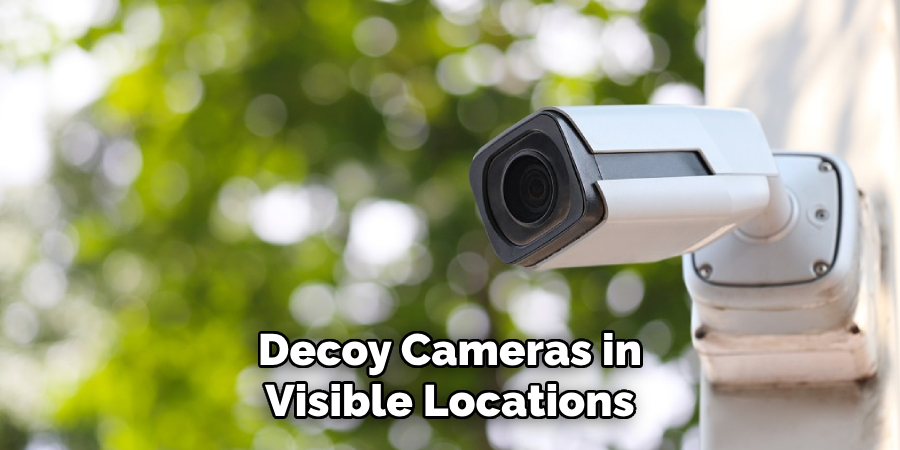
- Utilize Decoy Cameras: Install decoy cameras in visible locations alongside your real security cameras. These can act as a deterrent to potential intruders, making them think twice about targeting your property. While they won’t record footage, their presence alone can be an effective part of your overall security strategy.
- Implement Geofencing: Use geofencing technology to enhance your security system. This feature can trigger certain actions (like turning lights on or setting the alarm) when a mobile device enters or leaves a predefined perimeter around your property. It’s a smart way to automate your security based on your location, adding an extra layer of convenience and protection.
- Adopt Advanced Motion Detection: Opt for security cameras and sensors with advanced motion detection capabilities, such as distinguishing between humans, animals, and vehicles. This reduces false alarms and ensures that you’re alerted only to the movements that matter most to your security.
- Secure Wi-Fi Networks: Ensure your home Wi-Fi network is secure by using strong, unpredictable passwords, enabling network encryption, and hiding your network from public view. A secure Wi-Fi network is crucial to prevent cyber intruders from accessing your security devices and personal information.
- Regularly Test Your System: Make it a habit to test all components of your security system regularly. Check batteries, signal strengths, camera feeds, and sensor functionality to ensure everything is working as it should. This helps identify any issues before they can compromise your security.
With these additional tips and tricks, you can further enhance the effectiveness of your security system and keep your property safe and secure.
5 Things You Should Avoid When Improving Your Security System
- Neglecting Regular Updates and Maintenance: Please update your security software and perform regular maintenance checks to ensure your system is protected from new threats. Regular updates are crucial for patching security flaws and enhancing system functionality.
- Overlooking Physical Security Measures: While digital security is essential, physical security measures like proper lighting, secure locks, and reinforced doors should be considered. A balanced approach to both physical and digital security provides comprehensive protection.
- Using Default Security Settings: Default settings on security devices are often well-known and can be easily exploited by intruders. Always customize the settings for your security devices to enhance their safety and effectiveness.
- Ignoring User Access Management: Giving too many people access to your security system can increase the risk of security breaches. Carefully manage who has access to your system and ensure they are trained on proper security protocols.
- Need to Plan for Power Outages: Security systems require power to operate. Neglecting to plan for power outages with backup power solutions can leave your property unprotected during critical times. Ensure you have a reliable backup power source in place for your security infrastructure.
Avoiding these pitfalls can significantly enhance the reliability and effectiveness of your security system, keeping your property and its occupants safer.
5 Different Types of Security Systems and Their Advantages
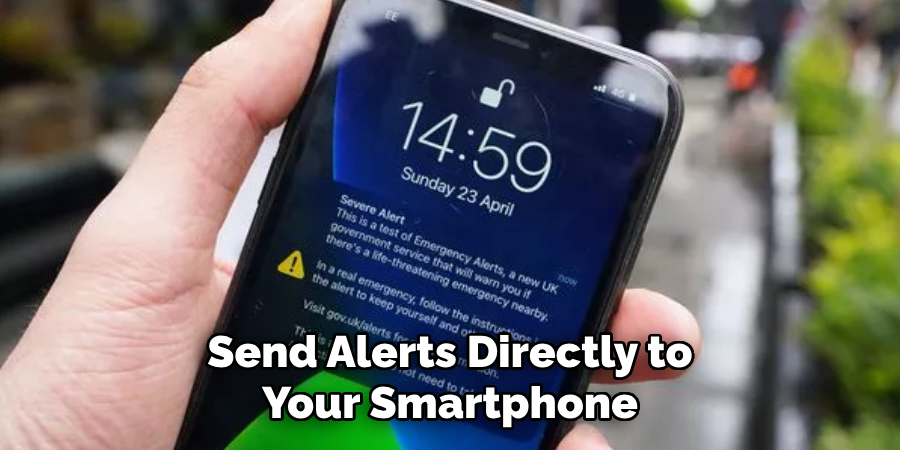
- Monitored Alarm System: A monitored alarm system connects to a monitoring service that alerts authorities in case of an emergency, ensuring swift response times. This type of system is ideal for high-risk properties or those located in remote areas with limited access to emergency services.
- Self-Monitored System: Self-monitored systems send alerts directly to your smartphone or other mobile devices, allowing you to monitor and respond to potential threats in real time. They offer flexibility, convenience, and cost savings by not requiring a monitoring service.
- Video Surveillance System: Video surveillance systems use cameras and other recording devices to capture footage of activities on and around your property. This type of system provides valuable evidence in case of a break-in or other incident and can act as a deterrent to potential intruders.
- Perimeter Detection System: Perimeter detection systems use sensors and alarms placed around the perimeter of a property, alerting you to any unauthorized entry. They are ideal for larger properties with extensive boundaries and provide additional protection.
- Access Control System: Access control systems use keycards, biometric scans, or other methods to restrict access to designated areas within a property. This type of system is essential for limiting access to sensitive areas and preventing unauthorized individuals from entering specific locations.
Each type of security system offers unique advantages, and the best option for your property will depend on your specific security needs. Consider consulting with a professional security provider to determine the most effective system for your property.
What are the Risk Factors to Consider When Choosing a Security System?
- Location: The location of your property can greatly impact the type and level of security needed. Properties located in high-risk areas, such as busy city centers or remote locations, may require more robust security measures.
- Property Size: Larger properties may need a combination of security systems to cover all areas effectively. A one-size-fits-all approach may not provide adequate protection for larger properties.
- Budget: The cost of security systems can vary greatly, so it’s essential to consider your budget when choosing a system. While it’s important not to sacrifice quality for cost, affordable options are often available that can still provide effective protection.
- Security Provider Reputation: When selecting a security provider, it’s crucial to research their reputation and customer reviews. A reputable and experienced provider can offer valuable expertise and reliable service.
- Potential Threats: Consider the potential threats your property may face, such as burglary, fire, or natural disasters. This can help determine which type of security system is best suited to protect against these risks.
By carefully considering these risk factors, you can make a well-informed decision when choosing a security system for your property.
Conclusion
In conclusion, how to improve security system involves a thoughtful combination of regular updates and maintenance, integration of physical security measures, customization of device settings, diligent user access management, and preparedness for power outages.
By avoiding common pitfalls and making informed decisions about the type of security systems that best suit your property, you can enhance your security infrastructure’s reliability and effectiveness significantly. It’s also essential to consider the specific risk factors associated with your property, such as location and potential threats, to tailor your security measures accordingly.
Ultimately, the goal is to create a secure environment that protects both the property and its occupants, providing peace of mind and safety. Remember, ongoing assessment and adaptation of your security strategies will keep you one step ahead of potential threats.
About
Safety Fic is a distinguished figure in the world of Diy design, with a decade of expertise creating innovative and sustainable Diy solutions. His professional focus lies in merging traditional craftsmanship with modern manufacturing techniques, fostering designs that are both practical and environmentally conscious. As the author of diy, Safety Fic delves into the art and science of Safety Fic-making, inspiring artisans and industry professionals alike.
Education RMIT University
(Melbourne, Australia) Associate Degree in Design (Safety Fic) Focus on sustainable design, industry-driven projects, and practical craftsmanship. Gained hands-on experience with traditional and digital manufacturing tools, such as CAD and CNC software.
Nottingham Trent University
(United Kingdom) Bachelor’s in diyfastly.com and Product Design (Honors) Specialized in product design with a focus on blending creativity with production techniques. Participated in industry projects, working with companies like John Lewis and Vitsoe to gain real-world insights.
Publications and Impact
In diy, Safety Fic his insights on indoor design processes, materials, and strategies for efficient production. His writing bridges the gap between artisan knowledge and modern industry needs, making it a must-read for both budding designers and seasoned professionals.
